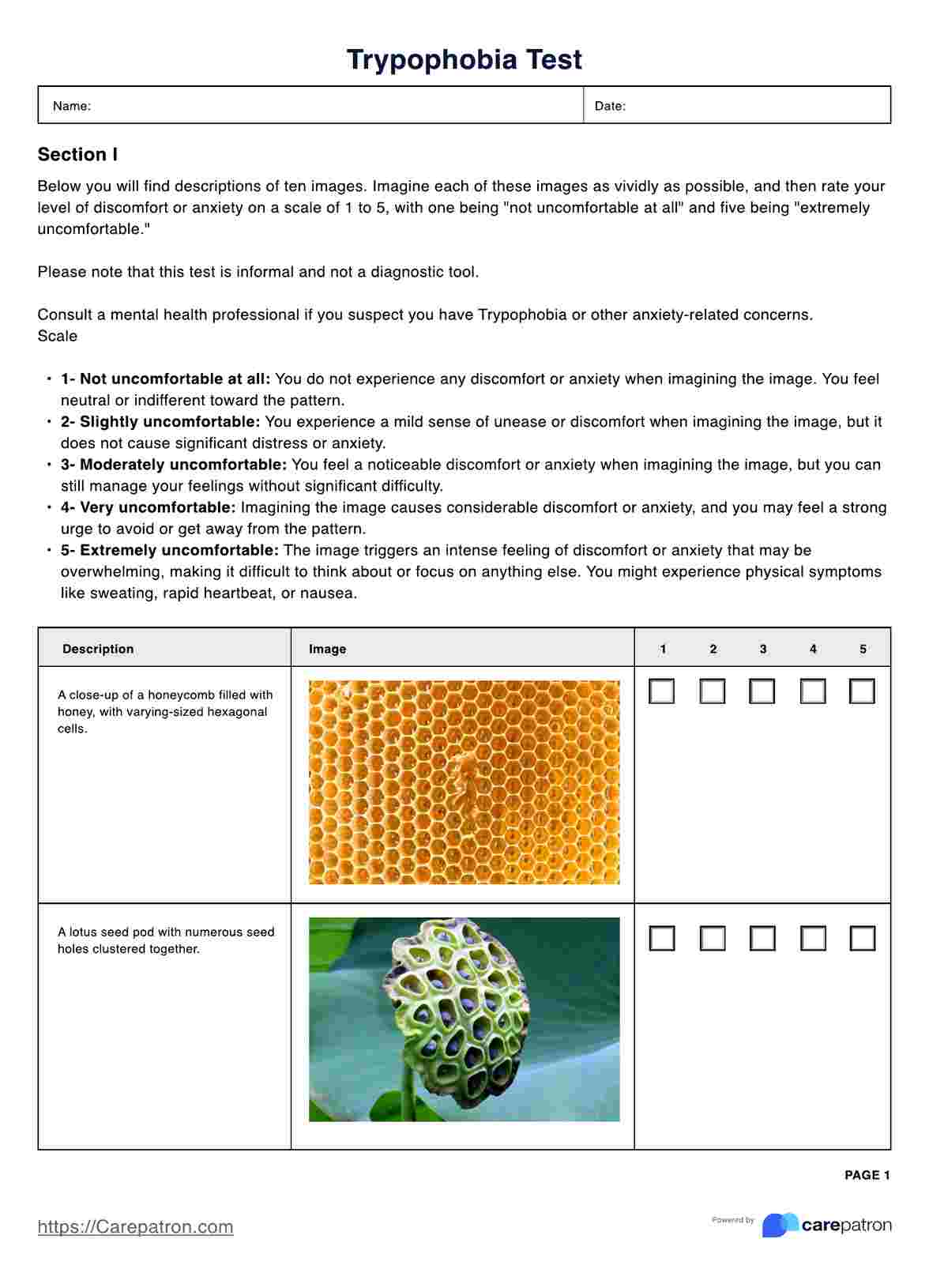The Trypophobia Test is an informal self-assessment tool created by various mental health professionals and researchers interested in understanding the phenomenon of Trypophobia.

Trypophobia Test
Discover our comprehensive Trypophobia Test and learn how to assess your aversion to patterns of holes or bumps. Download our free PDF template today!
Trypophobia Test Template
Commonly asked questions
Interpreting the Trypophobia Test results involves calculating your total score based on your ratings for the ten images and reviewing the scoring guidelines. A higher score indicates a greater aversion to trypophobic patterns.
However, it is essential to remember that the test is not a diagnostic tool. Any concerns related to anxiety or phobias should be discussed with a qualified mental health professional.
The Trypophobia Test helps individuals gauge their level of discomfort or anxiety when imagining or encountering images with clustered holes, bumps, or similar patterns. It can provide insight into one's sensitivity to trypophobic patterns and be a starting point for discussing concerns with a mental health professional.
EHR and practice management software
Get started for free
*No credit card required
Free
$0/usd
Unlimited clients
Telehealth
1GB of storage
Client portal text
Automated billing and online payments











